Cryptocurrency Mining On The Go Or What Is "Proof of Walk"?
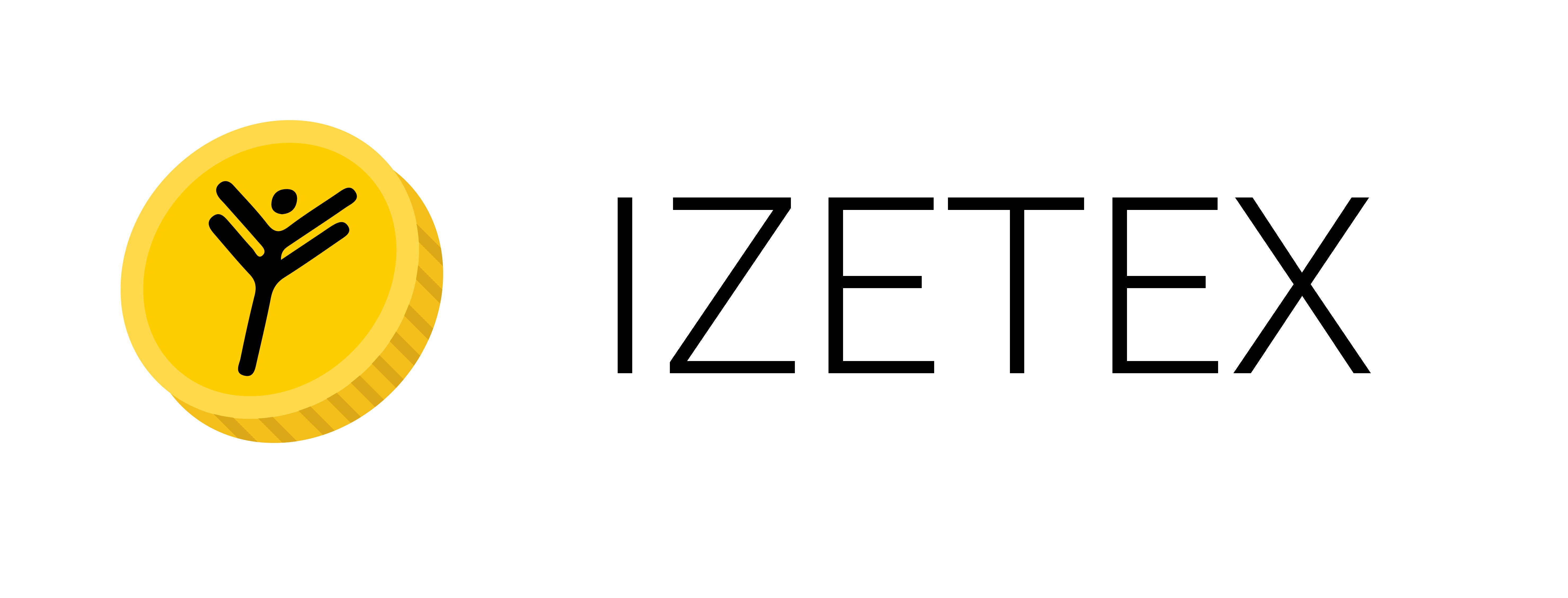
When you hear about cryptocurrency mining, you imagine, of course, long series of video cards with lights blinking or rows of servers that are eating electricity and heating the air around you like a band of dragons. It's all true, but today we are going to talk about mining that differs. And video cards have nothing to do with it.
Searching for cryptocurrency in augmented reality application IZETEX was jokingly called mining on the go or "Proof of Walk". If you don't know, it is a mobile game where you search for cryptocoins on the map like you do it with Pokemon, and then catch them to your wallet using your phone camera in the augmented reality mode.
Despite the fact that it was just a funny game, the cryptocurrency in it has real value in the form of prizes, discounts, or an equivalent in cryptocurrency. In general, people go around in swarms and look for these coins, earning them with their feet, that's why it was called mining on the go.
The term "Proof of Walk" appeared later, it resembles the term "Proof of Work" in sound and meaning, for which farms with video cards are built.
Just a joke or is there anything more in its meaning?
Let's gain an insight!
Why do we need it?
First, let's remember why these video cards heat the air and what Proof of Work is. It is proof of work. In fact, it is an artificial barrier, so that it could be not too simple to add blocks to the chain as well as not too fast.
Miners are allowed to add a block to the block chain, only if they solve a problem first. The condition of the problem is very simple - to select a seed to calculate the hash of the block, so that first N digits were equal to zero. The higher N is, the more difficult the problem is. The condition is simple, but you cannot say the same about the problem itself. If N is high, the solution is extremely difficult and people solder special processors based on ASICS (specialized programmable chips) or deprive children of computer games, and build farms from video cards:
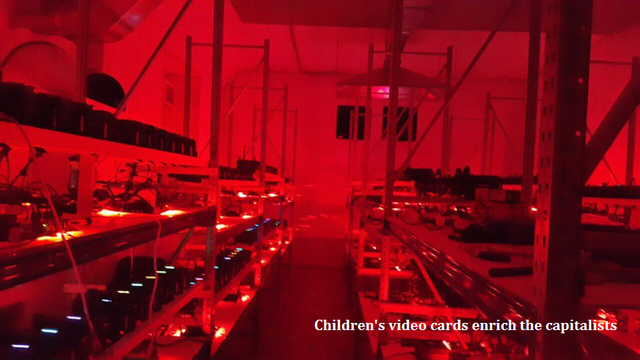
Why is it necessary to make addition of a block to the block chain even more difficult, which in fact is not very fast?
To answer this question, you must first answer the other one: what is the main problem solved by the block chain?
The problem of trust without a trusted party.
Let's think it through: you must have trust in each bit of information in a network, where no participants trust each other.
Part of the solution to this problem covers the use of asymmetric cryptography. We can be sure that participants do have accounts that are used to make transactions by means of verification of a digital signature pair with a public key.
But the second part of the problem cannot be solved mathematically and requires some empiricism. Among such problems is protection against spending the same money twice (the so-called "double spending problem").
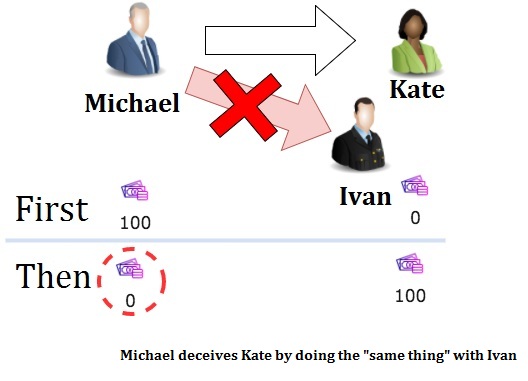
An intruder can make two blocks and include money transfer to two different recipients in each of them. At the same time, he/she will insert one block in one block chain and the other block - in another chain, for example, on different nodes of a single block chain network. This situation is called "fork" and the block chain network can solve it by choosing which of the chains will grow and which one should die. But there is no reason for the network itself to choose which of the chains is correct, and indeed what is "correct" - in this case it is a philosophical issue, rather than a mathematical one.
The decision as to which block chain to choose is taken based on a "consensus". In other words we can say that the miner who will create ("mine") the next block takes a decision which chain is correct. Usually it is not enough, and the chain should be continued by a few (usually 5-8) blocks to make the recipient sure that the transfer was made to him/her and no one else.
If everyone could add blocks to the chain at any speed and without cost, then it would be clear that this mechanism could not work. Indeed, to ensure that the chain cannot be faked, resources that no one else in the world has are required re-create these 5-8 blocks. Here these far-fetched problems related to hash, video cards and children without games appear.
Let's summarize: You can trust in something, on which resources were spent It is interesting that computers used for mining can be considered as a kind of a community that decides what is good and what is bad. But that's not the case, of course.
In fact, computers are used by people who get financial benefits from mining, and it is financial benefits that force them, first, to mine and, most importantly, to behave "correctly". The network pays miners a fee for each new block and it is economically unprofitable for them not to follow the rules and look for ways to deceive the system.
It is money compensation for mining that allows to trust in a block chain.
So, all of the above may seem to be a more complicated structure, and it is so. A block chain is really a difficult thing. But if you think about the complexity of the problem that it solves the problem of trust without a trusted party, then I think you will find justification for it.
You may ask why we mentioned Pokemon?
Let's have a look at IZETEX game from the point of view of mining. Players install the mobile application, and receive a map with the location of the nearest coins. If you approach a coin, a sight appears and the coin can be caught by the camera.
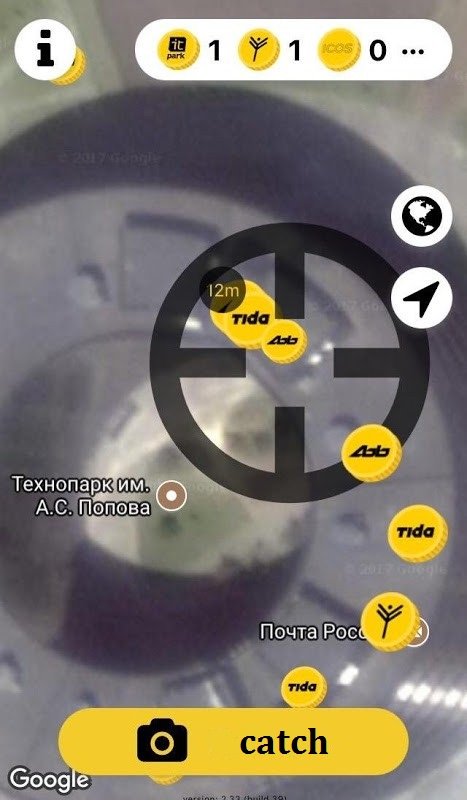
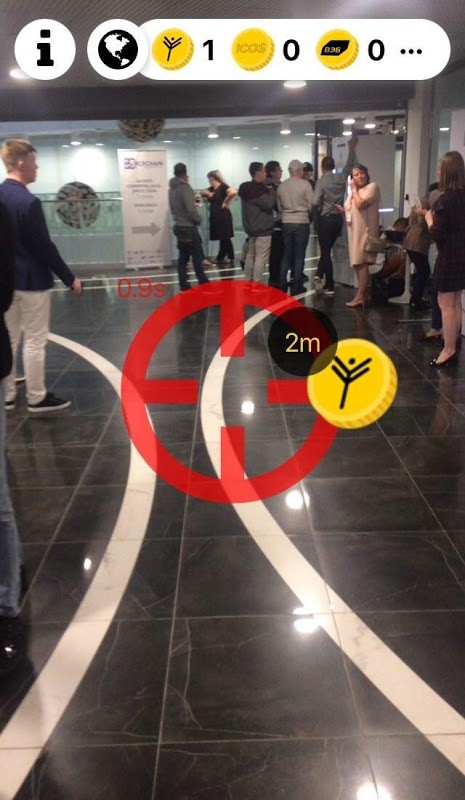
First, the player must find a coin on the map and come to it as close as possible. Usually there are not so many coins, as shown in the screenshot above, and sometimes it is not so easy to approach a coin. However, after analyzing actions of players, we see that difficulties in finding tokens stop nobody, and if the player started to look for them, he/she becomes addicted and collects, collects and collects...
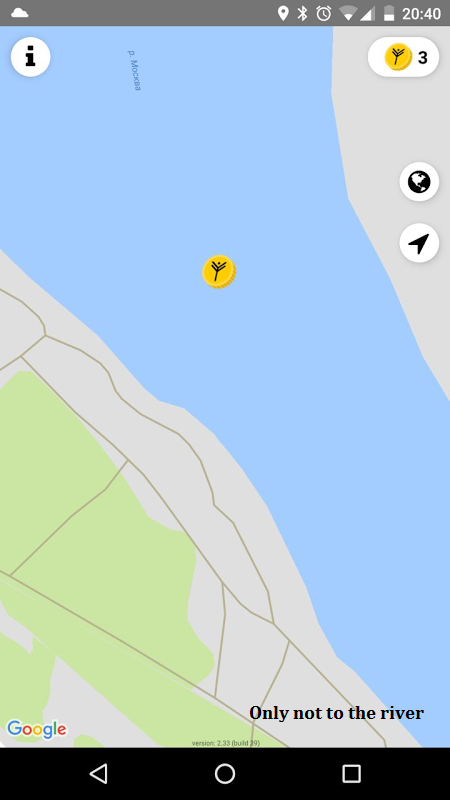
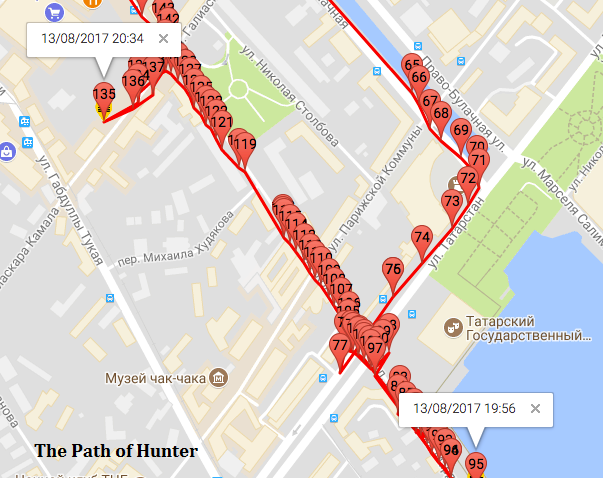
Players spend time, walk or travel long distances to catch a token. It seems that the time, efforts, and, perhaps, money spent for transportation should be compensated by the pleasure of the game and the value of the prize. Let's turn to the average data that we collected in the course of several promotion events

The table shows the average data for three different promotion events with different types of prizes offered. The first two ones were held in the city of Kazan. The average distance traveled to find one token in the city is about 2 kilometers, and it took 16 minutes for searching.
The third line in the table is the event held at the premises of Innopolis, where conference "Block Chain - New Oil of Russia" took place. The room was rather big, in addition, some tokens were scattered across the adjoining territory. The distance traveled was much less as compared to the city, but the time to find a token was almost the same.
Let's express player's costs as a sum of time and distance at some reasonable coefficients. For the purposes of calculation we assumed that 1 hour of player's "mining" costs 5.5 USD, and 1 kilometer passed costs 0.17 USD. The figures are based on general considerations about the cost of public transport, gasoline and the price of Uber taxi. We got the following table:

The figures do not differ much, although it is clear that it is more profitable to "mine" in a room.
Mining on the go
Although conditional costs of a "miner" per token stated above are based on the data from different promotion events, they are quite similar. Costs of players to find a token justify its value. In fact, the rate of Bitcoin and Ethereum was initially determined solely by the cost of mining, since there were no other exchange or settlement transactions by which it could be determined. While no goods in a store could be bought for the cryptocurrency, its cost was equal to the cost of electricity spent for its generation.
"Sly" block chains increase the complexity of mining, and the rate of bitcoin "to electricity" is gradually growing. Well, you know what happens next - when the currency becomes payable in stores, speculators start to influence the exchange rate much more than the cost of electricity.
The same situation is with IZX token, which players are looking for - initially it was evaluated according to the same principle based on mining costs. Conditionally, now it "costs" 1.47 USD. If you put aside the factor of pleasure from the game, then it is as profitable to buy it for this amount as "to mine it on the go".
Advertisers who place their promotion campaigns on IZX tokens and get new customers determine the second factor for the growth of the token value. The audience of players is growing, and advertisers are competing for the opportunity to use IZX token to attract customers. The demand factor will determine the growth of the token rate in the future, similarly to other cryptocurrencies.
Proof of Walk
IZX tokens are not just collected by players, they are properly "mined". Since advertisers pay for scattered tokens and get new customers and buyers, they determine which customers they need.
The fact that it was jokingly called "Proof of Walk" is a proof based on the player's actions that the advertiser values him/her and, therefore, he/she can compete in the game for the right to pick up his/her token.
Although it has nothing to do with the development of blocks in the block chain, but it is quite applicable to the principle of justification of trust in "Proof of Walk". First of all, it is the advertiser's trust in the quality of the audience, and even personally in the player.
Let's remember the main conclusions that we made above by analyzing traditional mining "Proof of Work":
You can trust in something, on which resources were spent and Money compensation for mining allows to trust in the block chain In the case with Proof of Walk, both principles are fulfilled between people in the society but not between computers connected to the network.
What are advantages of mining?
There is no applied advantage in burning electricity and considering hash useless. Therefore, all new projects of block chain platforms try to get away from this model in favor of less resource-intensive ones, such as Proof of Stake (POS).
The principle of POS is that the proof of your rightness is the size of your wallet multiplied by the time of its possession. This approach, in my opinion, may imply problems.
POS equates resources to its own internal cryptocurrency when building its proof, like Munchausen, who pulls himself out of the swamp by the hair. Time will show whether this will cause real problems for POS, so far the only model that has been proved in practice is Proof of Work.
The society should spend additional resources for proving trust, and this is the main benefit of mining. Perhaps, in the future mining will not be as useless as traditional Proof of Work, but it will.
A recent example of useful mining is Storj project, where you can earn currencies by providing your own disk space for storing third-party data. Another example is Golos project, in which the currency is earned by writing interesting articles.
We are sure that future belongs to the symbiosis of mining with some useful activity, and it is this characteristic that will confirm the value of the cryptocurrency.
thanks for sharing
IZETEX gonna follow you, babe! You are hot!
Congratulations @izetex! You have completed some achievement on Steemit and have been rewarded with new badge(s) :
Click on any badge to view your own Board of Honor on SteemitBoard.
For more information about SteemitBoard, click here
If you no longer want to receive notifications, reply to this comment with the word
STOP